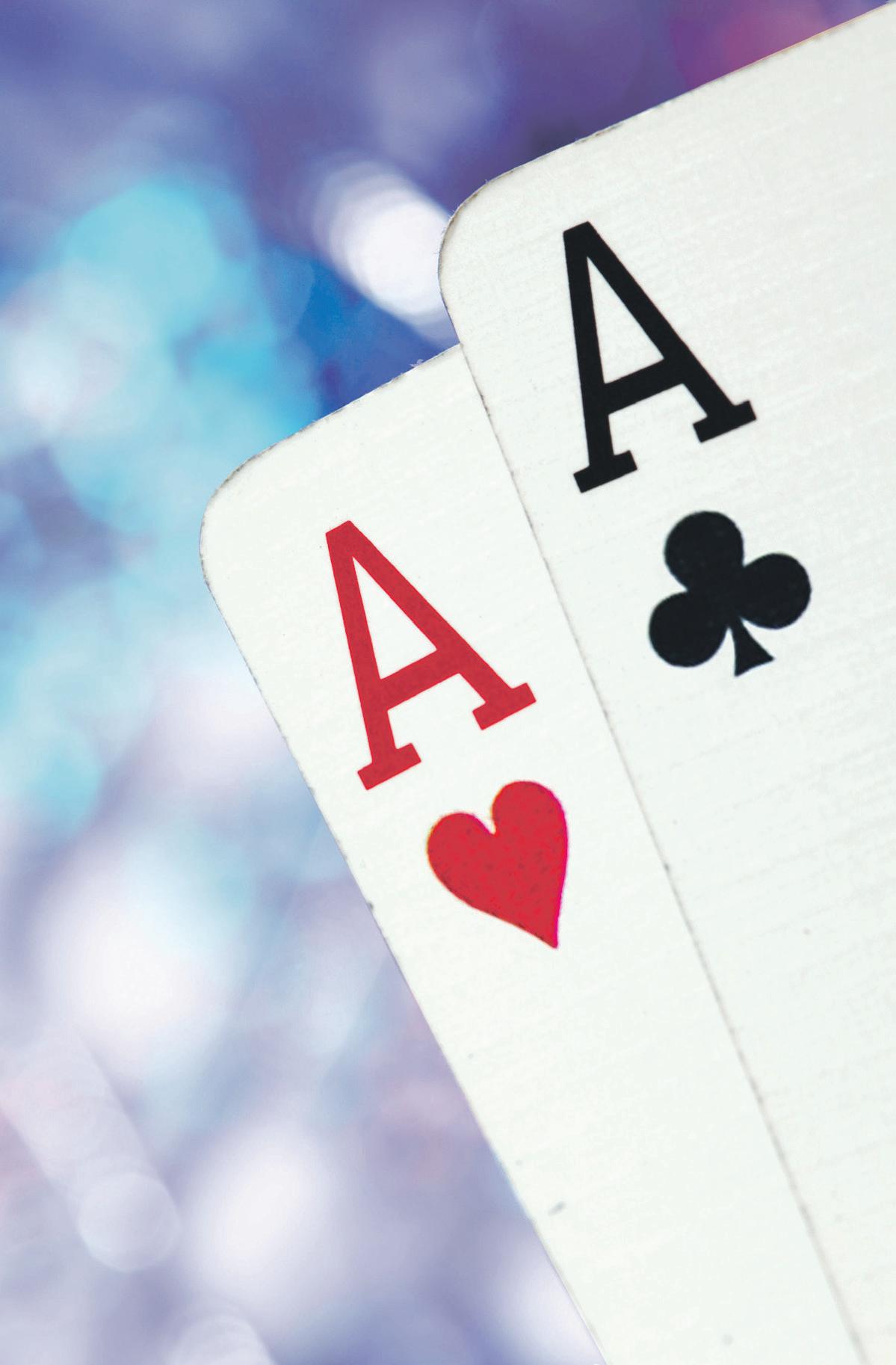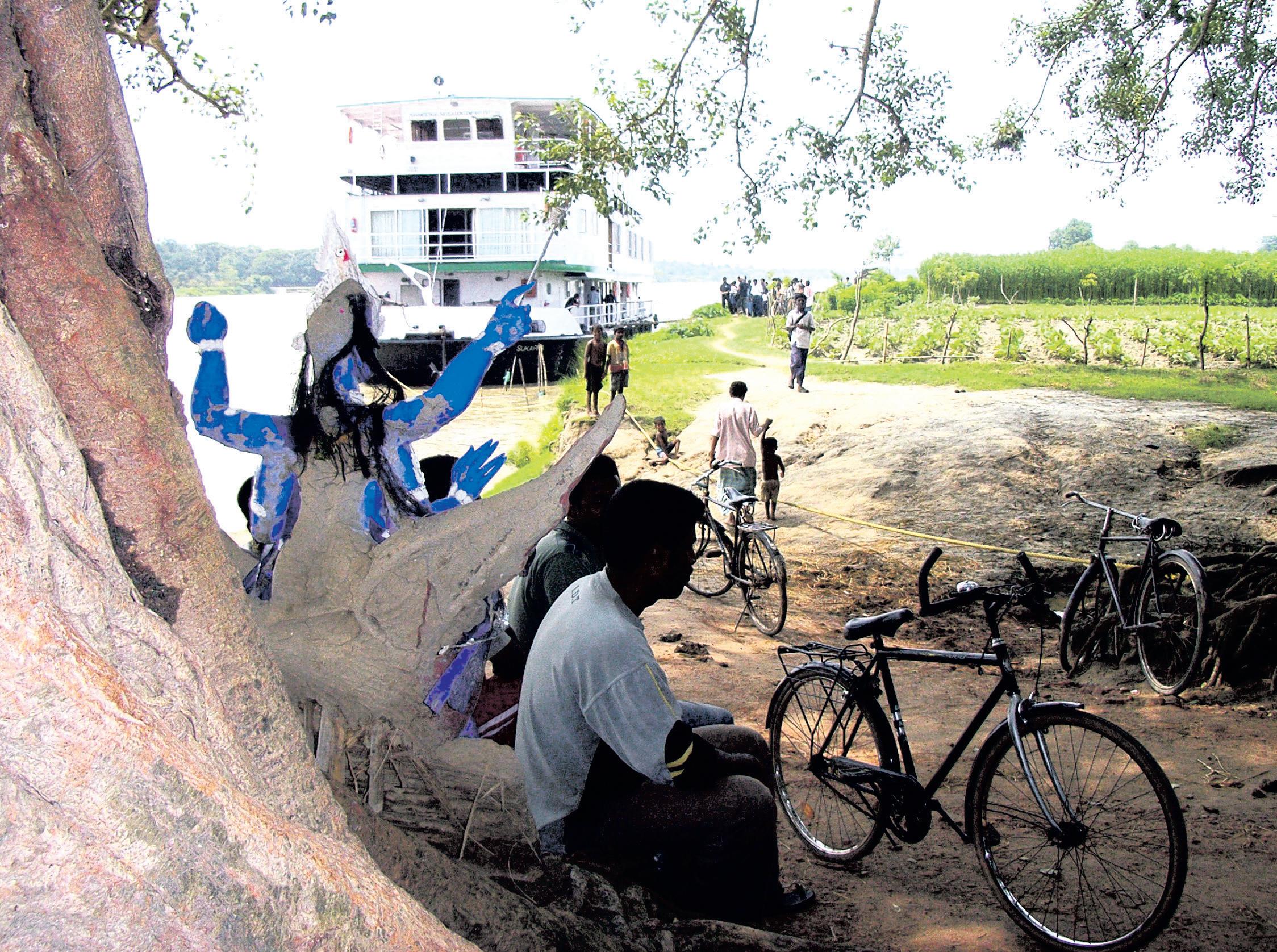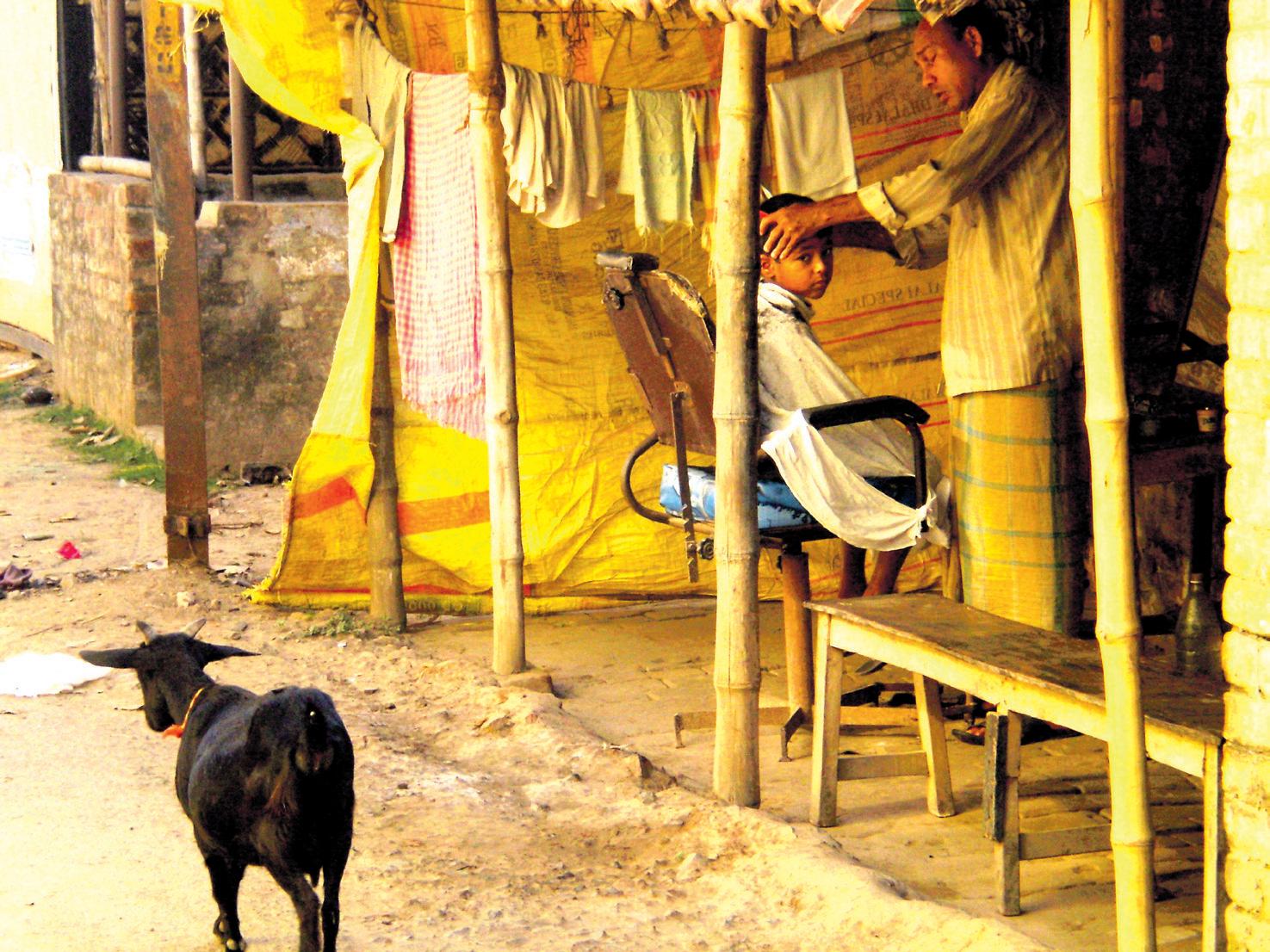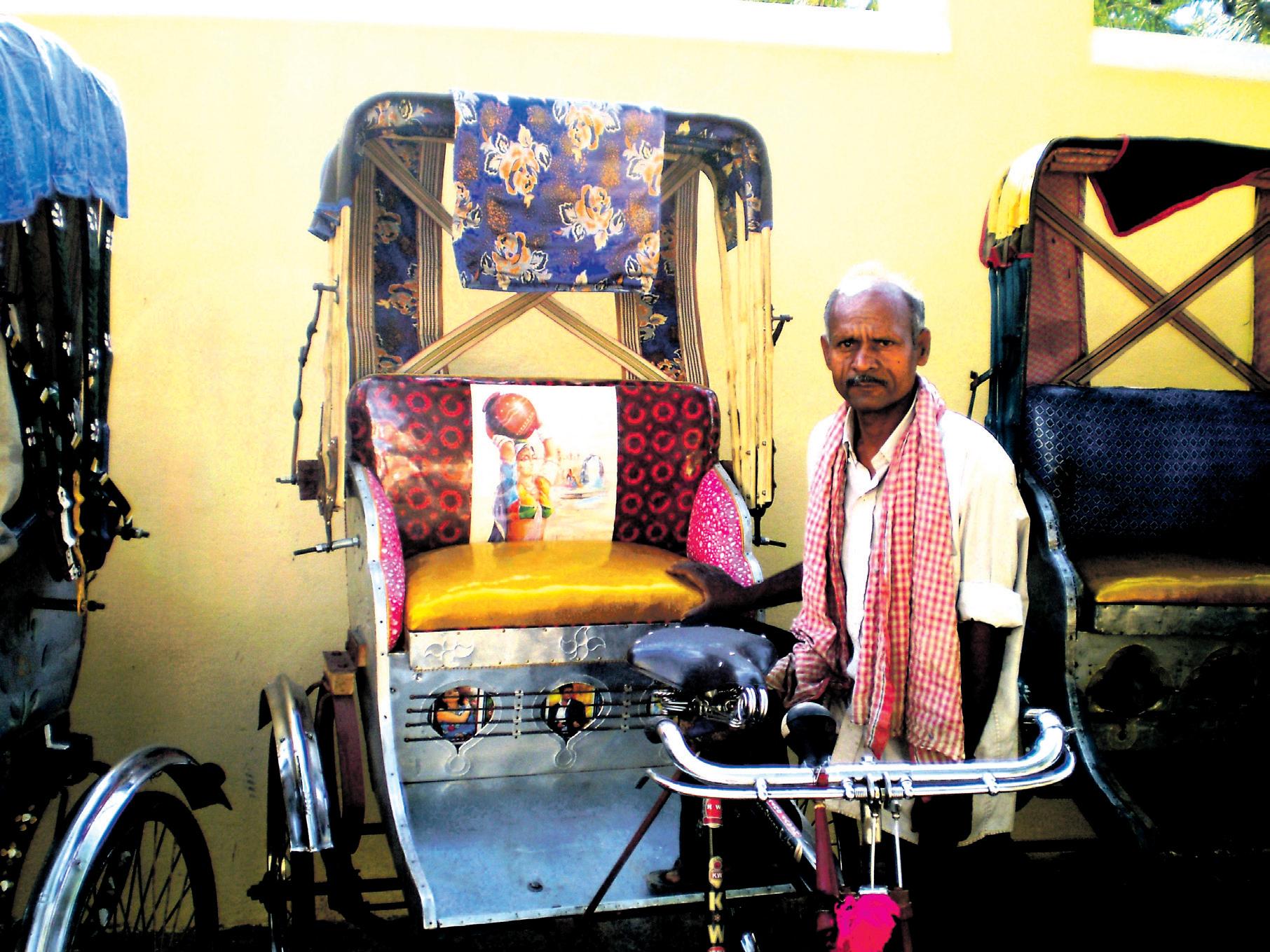
7 minute read
Not on Valentine’s Day, please!
from 2013-02 Sydney (1)
by Indian Link
For all those lovers with romantic ideas, here’s what not to do as you celebrate this special day of romance, writes FARZANA
SHAKIR
This year is advancing way too fast for me. Wasn’t it just yesterday we were celebrating New Year and lo, in a blink of an eye, it’s February. The month of love, Cupid’s playtime or whatever you want to call it, all over the world, it’s time to celebrate Valentine’s Day. And what a wonderful time of year it is to slow down and take stock of the romantic situation in your life. To make that special person feel fully loved. And if things haven’t been going too well, it is the best time to start making amends by going out of your way and making an extra effort on Valentine’s Day.
Let’s face it, while there’s a sea of information and advice out there on what to do, how to dress, where to go and the right gift to buy for your Valentine, there’s not much about the things to avoid. So here’s what you must never do on Valentine’s Day.
Don’t do nothing!
The worst thing you can do on Valentine’s Day is, not do anything. Don’t make that mistake: not only is it an unforgiveable faux pas, it also breaks your loved one’s heart. It gives the message that you don’t consider them important enough to make an effort on this very special day. So please, whatever you do, just don’t do ‘nothing’! Take the initiative to make your Valentine feel special. Arrange for a romantic day together and don’t forget the flowers and a gift - the costlier the better, but even a small gesture means a lot. Try to be generous; it only comes once a year.
Fast food faux pas
For the boys, if you can’t afford a lavish dinner date, try arranging something intimate and special at home. Taking her to a fast food outlet doesn’t say much about you; it lacks style, looks cheap and does not feel special at all. Instead, take the initiative to cook for her. Set up a romantic table for two complete with candles, flowers and music. Ask her to wear her favourite gown, and dress up to impress as well. Even a night in on Valentine’s Day can be made special.
Just the two of you
If you’re single, what you absolutely mustn’t do is accept an invitation to join a couple on their night out on Valentine’s Day. This is a romantic day and three can be a crowd, which will very likely leave you uncomfortable. So thank your friends for their good intentions but decline graciously. Being unattached doesn’t mean you have to sit around moping on Valentine’s Day. Instead, hook up with friends who are in the same boat, watch a movie, go out for dinner and have a fun night out in town. With Cupid out to strike, who knows, maybe you will meet someone special.
No first date
Don’t go on a first date or worst still, on a blind date on Valentine’s Day. This is never a good idea as your judgement and actions could be influenced by the pressure of timing and the situation. Everyone around you is in a romantic mood, and you could feel obliged to go with the flow (if only for the other person’s sake), leading to mistakes you might regret later. You might even overlook qualities that you would ordinarily find off-putting in a prospective partner.
Don’t break up
If your relationship is on the rocks you might not want to celebrate the day dedicated to lovers, but do keep track of the calendar and whatever you do, please don’t break up on Valentine’s Day. It’s just not worth it. Not only will you break someone’s heart on this sacred day for love, but you will create unpleasant memories for yourself for years to come. Forthcoming V-Days will remind you of the relationship that ended on that day and while there will be relief, there could even be some regret. So save yourself the baggage and hold up for a day or two after Valentine’s Day to call off a relationship.
Don’t overspend
While it is recommended you splurge a little on Valentine’s Day, it is definitely not worth getting into debt. So be mindful of not breaking your budget as a single day of enjoyment could lead to financial burdens which, in many cases, will strain the relationship with that same person on whom you splashed all your dough. Girls like to be made to feel like princesses on Lover’s New Year, but they resent having to pinch pennies for months afterwards to pay for the experience.
The worst thing you can do on Valentine’s Day is, not do anything.
Don’t expect too much
It is not a good idea to set yourself up for disappointment by expecting too much. If you expect little and get little, even that will make you happy. And if something extraordinary happens, it will be a bonus.
Cut the comparisons
Don’t compare your gifts with those that your friends have received. Be thankful for a considerate partner who made an effort to make you feel special and loved. Show your appreciation by reciprocating the gesture. Comparing gifts is a bad idea. After all, isn’t it the thought that counts?
Have a memorable Valentine’s Day!
If you can’t afford a lavish dinner date, try arranging something intimate and special at home.
internatiOnal ClairvOyant/sPiritual Healer

Mr Mane
THE MAN YOU CAN TRUST WITH HIS NATURAL GOD GIFTED POWER OF SECOND SIGHT.
SUCCESSFULLY HELPING DESPERATE PEOPLE FOR THE PASSED 25 YEARS.
Specialist in relationship, Bringing back love one, Good luck, Success in business, Sexual difficulties, Court cases, Marriage and family problem, Master of removing all problems
100% GUARANTEED-PRIVATE AND CONFIDENTIAL DONT SUFFER IN SILENCE
Historic religious edifices and lush greenery adorned the banks of the river on a leisurely cruise upstream from Kolkata to Farakka
distance trucks travelled one behind the other and amongst them, all manner of vehicles.
BY PETRA O’NEILL
It was our welcome dinner at the gracious Oberoi Grand Hotel in Kolkata.
I entered the dining room late, having made a quick dash to collect my shirt from the tailors, Jaggi and Co.
I was ushered in to join several English couples who had earlier cast somewhat disapproving looks at me as I stood in the lift covered in the pink dye that is so liberally tossed about during Holi. Together we would cruise upstream on the Hugli river.
The next morning we departed Kolkata in a cramped bonerattling bus, the English group having departed in a hurry after securing the superior bus with air conditioning. Off on a dusty highway once known as the Grand Trunk Road, our driver possessing a bearing that inspired confidence in his ability to do battle if perhaps not to drive, the bus bearing the scars of previous journeys, testimony that driving in India can be hazardous. Long
The noise of tooting horns and exhausts soon subsided, and we were surrounded by the green lushness of rural India.
The Hugli runs through the heartland of West Bengal to Kolkata and beyond to the Bay of Bengal. It was once a busy trade route that brought ships from Europe to Patna along with the Portuguese, Danish, Dutch, French and British who established settlements along its shores, providing a transport route onto Agra, Delhi, Varanasi and Lucknow. The river is narrow and the landscape is resplendent with the green of jute fields, mango orchards, palms and rice paddies.
Several hours later, with an inside temperature gauge that swung between 32 and 37 degrees Celsius, we arrived at the sleepy town of Chandernagore, established as a trading post by the French in 1673. I walked along the promenade and visited the former French Governor’s residence. Men rode by on bicycles. Otherwise there was

French came to the Hugli after the Moghuls drove out the Portuguese in 1632, who had earlier established a settlement in 1537 near Bandel, a misspelling of the Arabic word for harbour, suggesting that the Arabs had been there even earlier. At Bandel we viewed the Imambara, dating from 1841, one of the most famous Shiya pilgrimage centres in West Bengal built by Hajee Mohummud Mohsin at an exorbitant cost.
The next day we arrived at Kalna to visit the intricately designed Rajbari temples, a unique mix of Bengal temple architecture built of bricks with intricate terracotta designs. The Nabakailas Temples, built in 1809 by the Bardhaman Maharaja, contains 108 sloped roofed Shiva temples arranged in two circles. The Pratapeshwar temple, built in 1849 contains terracotta plaques depicting themes of Hindu epics. The other temples are the Lalji temple built in 1739, the oldest in the complex, and Krishnachandra temple built in 1751.
In Murshidabad, the once great capital of the Nawabs, we visited Hazarduari Palace, built of Bengal terracotta art.
Colonel Duncan McLeod. The palace is fanciful and enormous in scale, with huge balustrades and more than a thousand doors along its vast corridors. Inside each of the huge rooms are collections of weapons, marble statues, porcelain, books, maps and numerous portraits and landscape paintings by Dutch, French and Italian artists.
The Palace was busy with families and their children who gazed up at the lofty ceiling. In wagons led by horses, our group was transported to Katra mosque, built in 1724, with huge domes and high minarets. I walked instead. Murshidabad is a pleasant town, its denizens friendly. All seemed to know I was following the horses, and would point the way ahead. As I turned a corner, I heard young children laughing on their way to school, saw a young boy having his hair cut, an elderly man asked if I could take his photo, and I admired beautiful lengths of fabric that had been hung out to dry.
After Murshidabad we sailed onto Jangipur, a temple complex built in 1714 – 1793 by Rani Bhabani, the landlord of Natore.
On arriving at the village of Akbarpur, we were surrounded by women and young children, some curious, some hoping to sell us cheroots and woven cotton textile sheets made locally.

We moored just before nightfall at a small village. I ventured off on a short walk, finding the market by the light of lanterns that were burning, the vendors long since having ended their day, the women now relaxed and engaged in friendly conversation. I was unnoticed away from the light of their lanterns, and this was the special moment which travellers hope to experience, of what life is like for those who live here. We entered the Farakka feeder canal to pass through the Farakka Lock Gate. Soon after, we entered the mighty river Ganges so wide that the banks were barely visible. The boat rounded a bend in the river and beyond it were vast fields. The women wearing their brightly coloured saris stopped working to gaze at us and against such a brilliance of green, it made for an amazing sight. Several Gangetic dolphins came into view, the landscape changed becoming much drier, and so ended my journey on the Hugli.








